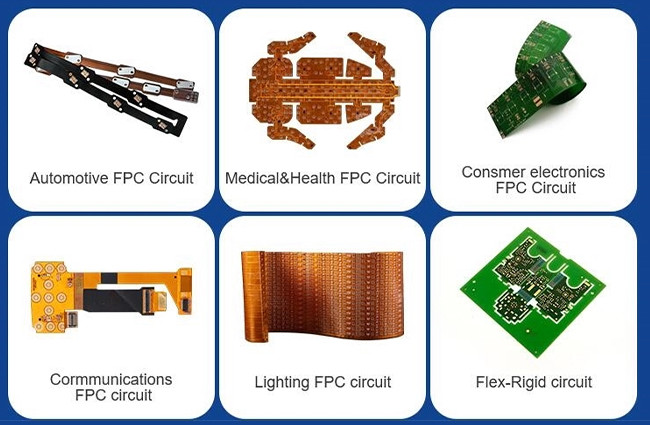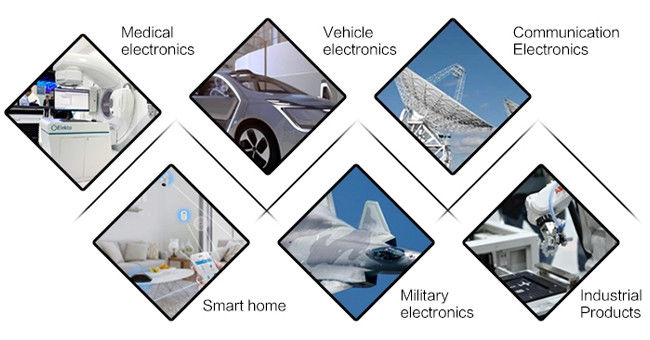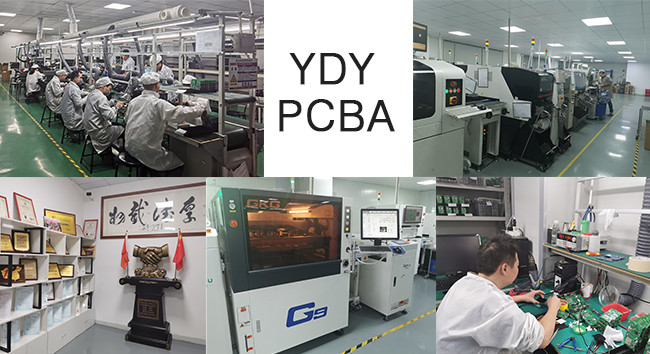| Sign In | Join Free | My frbiz.com |
|
- Home
- Products
- About Us
- Quality Control
- Contact Us
- Get Quotations
| Sign In | Join Free | My frbiz.com |
|
Brand Name : YDY
Model Number : R-001
Certification : ISO13485, IATF16949, ISO9001
Place of Origin : China
MOQ : 1pcs
Price : $0.1-0.3
Payment Terms : L/C, D/A, D/P, T/T, Western Union, MoneyGram
Supply Ability : 100000pcs/month
Delivery Time : 5-8 working days
Packaging Details : PCB: Vacuum Packing / PCBA: ESD Packing
Name : High Precision Manufacturing OEM ODM Flex Rigid Flexible Pcb
Testing : X-ray, 3D Paste Thickness, ICT, AOI
Product name : Flexible Printed Circuit board FPC Manufacturer
Layer : 1-8 Layer(flex Board)
Material : PI/PET/PEM/FR-4,Ployimaid,Epoxy,FR4
Service : OEM Services Provided,One-stop Service,PCB&PCBA
Copper thickness : 1/2OZ 1OZ 2OZ 3OZ
Min. line spacing : 0.1mm
Base material : Polyimide,PI,FR4,Taconic,Copper Film/Cover Film
High Precision Manufacturing OEM ODM Flex Rigid Flexible Pcb
1.PCB production service. Available on CEM-1,CEM-3, FR-4, TG150-180, Aluminum, FPC
2. PCB and PCBA copy service (PCB and PCBA reverse engineering service)
3. PCB assembly service. Available on SMT, BGA, DIP.
4. End products assemble. Available on Final Functional testing and final package
5. Electronic Components purchasing service
6. PCB and PCBA design service
Rigid-flex PCBs are a sought-after solution for industrial applications. They are mainly used in military, aerospace, and medical devices, as they can reduce the product’s weight. This enhances the device’s performance to a great extent. Rigid-Flex circuit boards also support construction of devices at feasible rates. This is due to their low weight and small size.
| Feature | NCAB´s technical specification |
| Number of layers | 4-16 layers |
| Technology highlights | Mixed materials including RF and high speed, standard FR-4, polyimide flex. Adhesiveless or adhesive based polyimide flex constructions, with cover coat or flexible solder mask materials. |
| Bending performance | Based on the specific design, the bend performance can range from a basic 90 °bend to fit to a full dynamic flex with 360° range of motion in the flex tail that will withstand continuous cycles throughout the product life. |
| Bend features | Bend radius controls the flexibility of the flex portion of the board. The thinner the material the lower the bend radius and the more flexible the flex section. |
| Materials | RA copper, HTE copper, FR-4, polyimide, adhesive |
| Copper weights (finished) | ½ ounce, 1 ounce, 2 ounce, 3 ounce |
| Minimum track and gap | 0.075mm / 0.075mm |
| PCB thickness | 0.4mm to 3mm |
| PCB thickness in flex section | 0.05mm to 0.8mm |
| Maxmimum dimensions | 457mm to 610mm |
| Surface finishes available | ENIG, OSP Immersion tin, Immersion silver |
| Minimum mechanical drill | 0.20mm |
What is a Rigid-Flex PCBs?
Rigid-Flex printed circuit boards are designed to provide solutions, and act as replacements for rigid PCBs. As the name suggests, these circuit boards are a hybrid of flex and rigid circuits. The advantage of this type is that they exhibit the benefits of both rigid as well as flexible circuit boards.
Most rigid-flex circuit boards consist of multiple layers of flexible circuit substrates attached to rigid boards externally and/or internally. The flexible substrates are designed to be in a constant state of flex, and are usually formed in a flexed curve during manufacturing or installation. This is dependent upon the design of the application.

Advantages of Rigid-Flex PCBs
The combination of these two circuits makes it an extremely beneficial product for both applications as well as customers.
Other common benefits include flexible design options, high circuit board density, high heat dissipation, and excellent resistance to chemicals, radiation, and ultra violet rays.
Applications of Rigid-Flex PCBs
Rigid-flex circuit boards can be found in commercial as well as industrial applications. These can range anywhere from electronic devices, to high grade aircraft mounted weapon guidance systems.
Rigid-flex PCBs applications include:


|
|
4 Layer Rigid Flex Pcb Manufacturing Process Images |